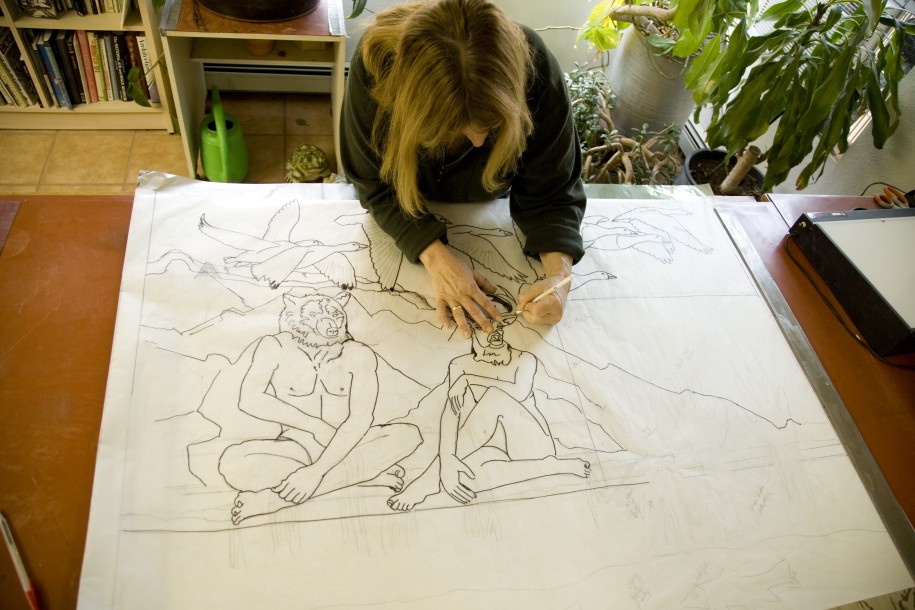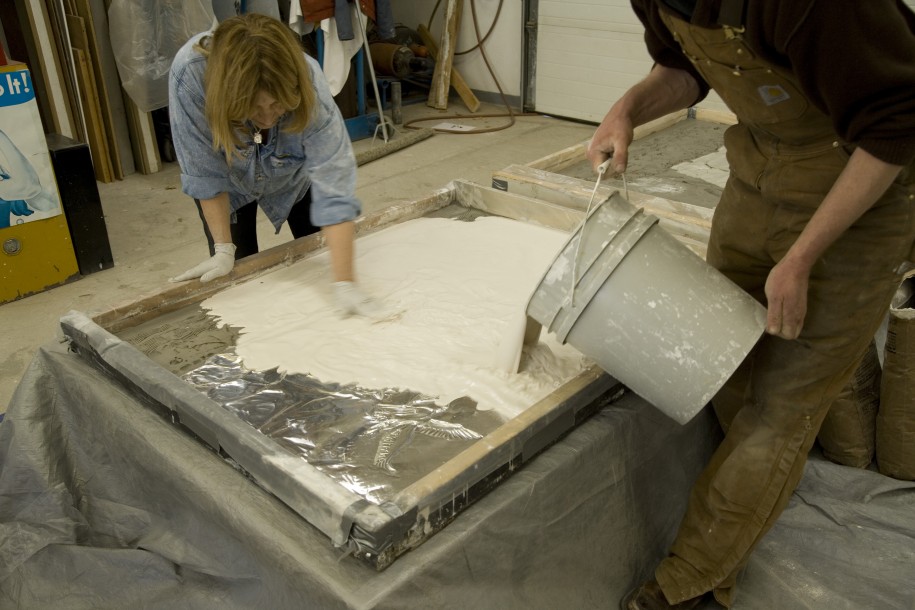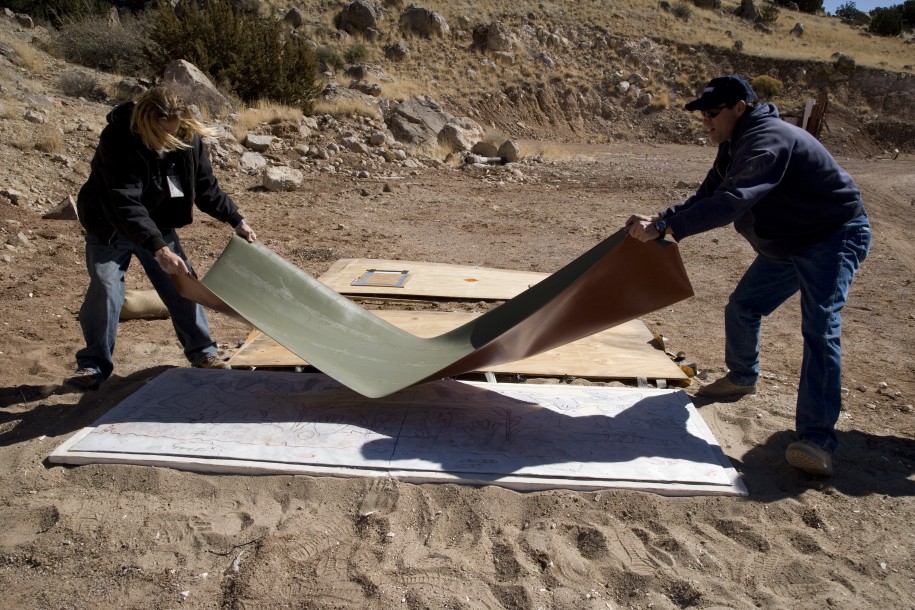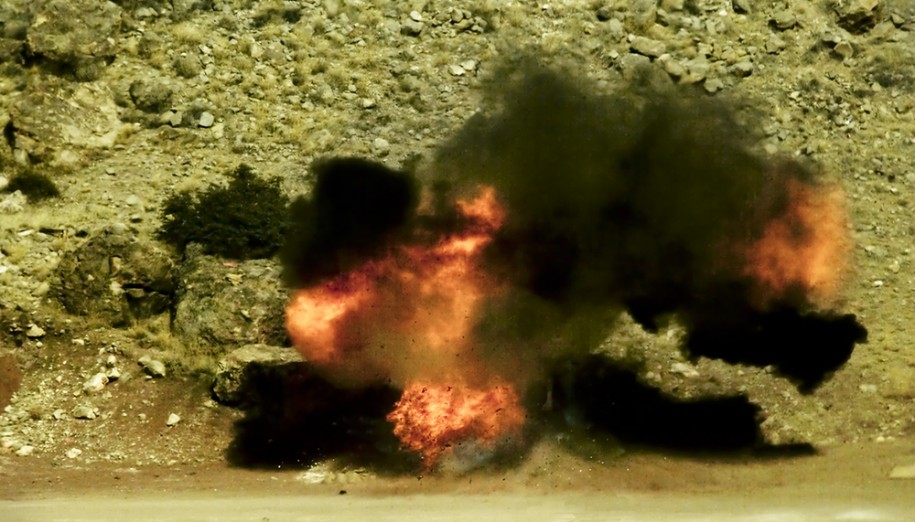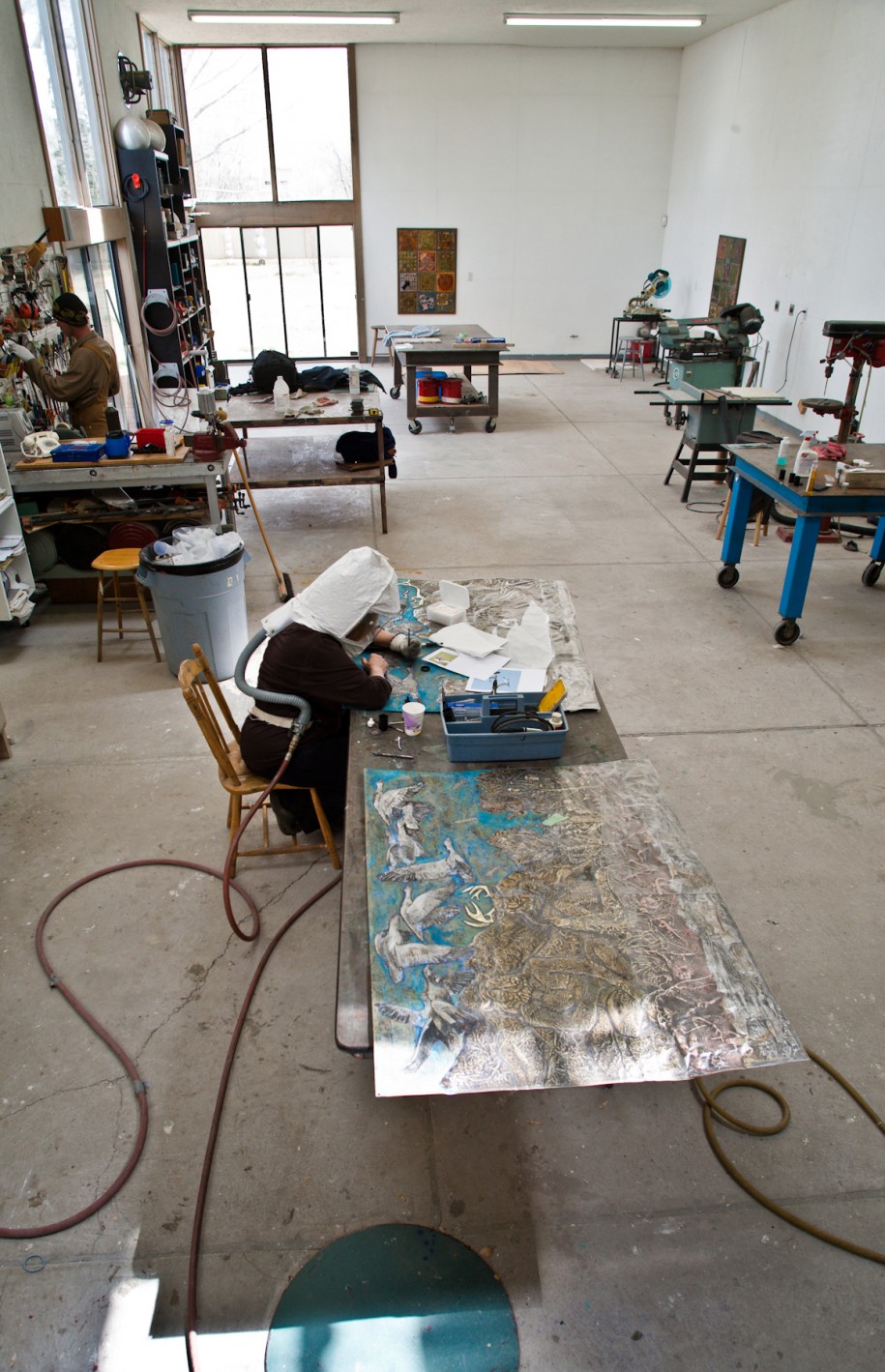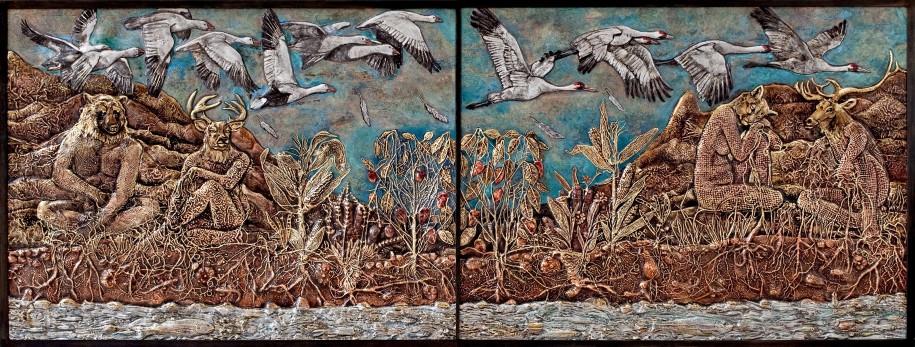Technique: Detonographics
To Create a Detonograph
21 Oct 2020
Evelyn works with the Energetic Materials Research and Testing Center (EMRTC), located at the New Mexico Institute of Mining and Technology in Socorro, New Mexico where, in 1986, with the support and cooperation of the Center, she developed the technique for creating the detonographs. The technique, which uses a sandwich of explosive material and metal sheets placed upon a clay mold, forms the basis for her art. The inclusion of natural objects, such as leaves, feathers, or pieces of fur placed between the sandwich and the mold add interest to the resulting sculpture and has given her the freedom to create art whick is unique and could be created in no other way.
Evelyn takes advantage of three characteristics which occur in the blast to create her images. First, the metal is formed over a plaster mold of three-dimensional design by the tremendous pressure of the explosive which is traveling at 27,000 ft/sec. Second, due to the force of the explosion, dissimilar metals are pressure welded together by the pressure of the blast. Third, real objects such as lace, leaves, or other textures placed between the explosive and the metal plate are impressed into the surface of the plate.
For a more detailed explanation you can order my book "Detonography - The Explosive Art of Evelyn Rosenberg" on Amazon.com
The process for a new Detonograph begins with the idea for the project. A sketch of the idea is drawn. and is transferred to a metal sheet to make the pattern for the mold
A metal sheet is prepared with thin metal sheets to obtain various metals on the final plate and real objects that will transfer their images to the plate.
The clay mold, with its bas relief image, is placed upon the ground. The mold is covered with the prepared metal plate. Then the plate and the mold is covered with the Data sheet explosive. The blasting caps are added.
Once everything is in place, the crew goes to a distant bunker, the explosive is detonated and the explosion forces the images of the objects, including the contours of the mold into the plate.
If all went as planned, the plate has recieved the exact image from the mold. Now it can be polished and treated with various chemicals to create colorful patinas in a variety of colors. The finishing of the piece becomes almost like painting as the details are brought out from the explosively created panel.


